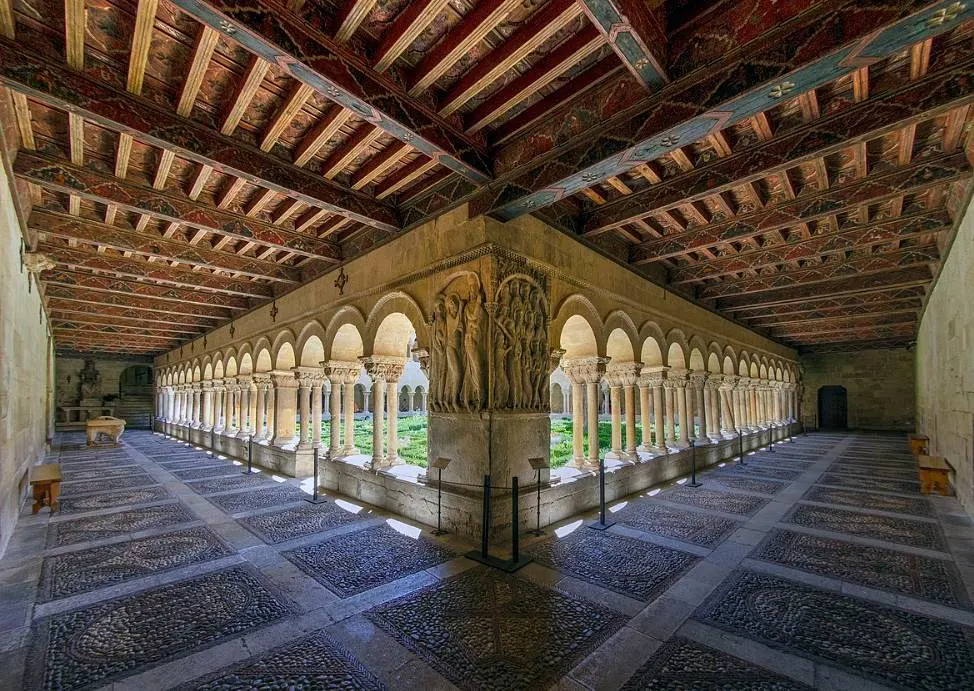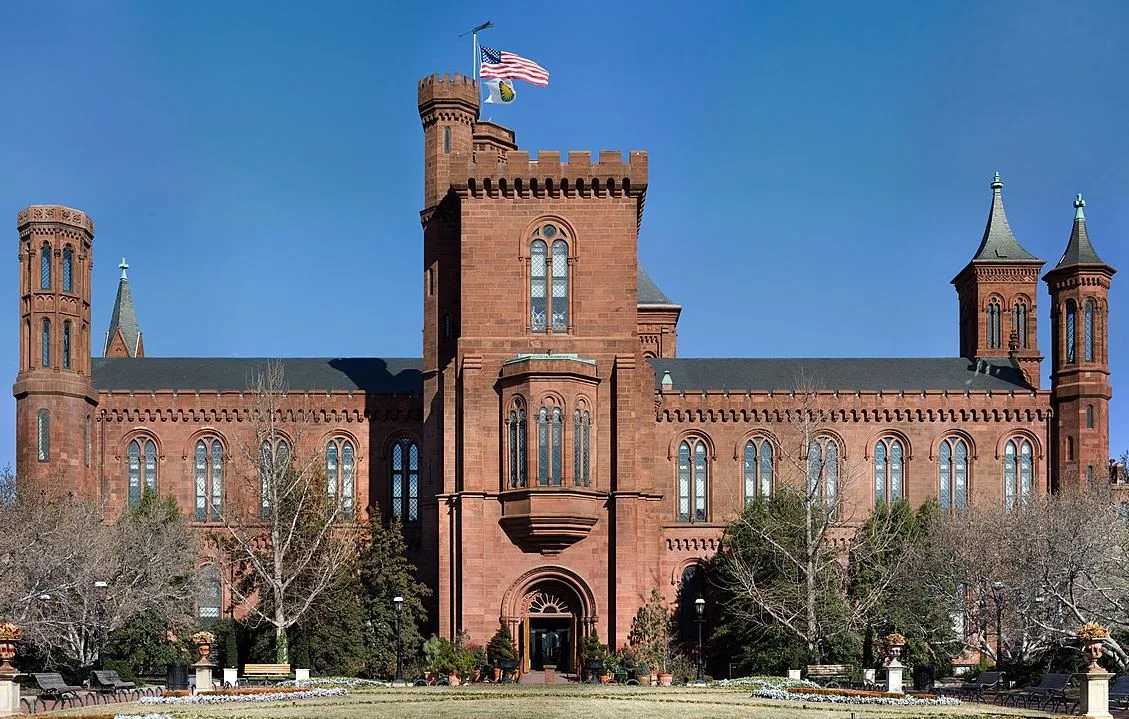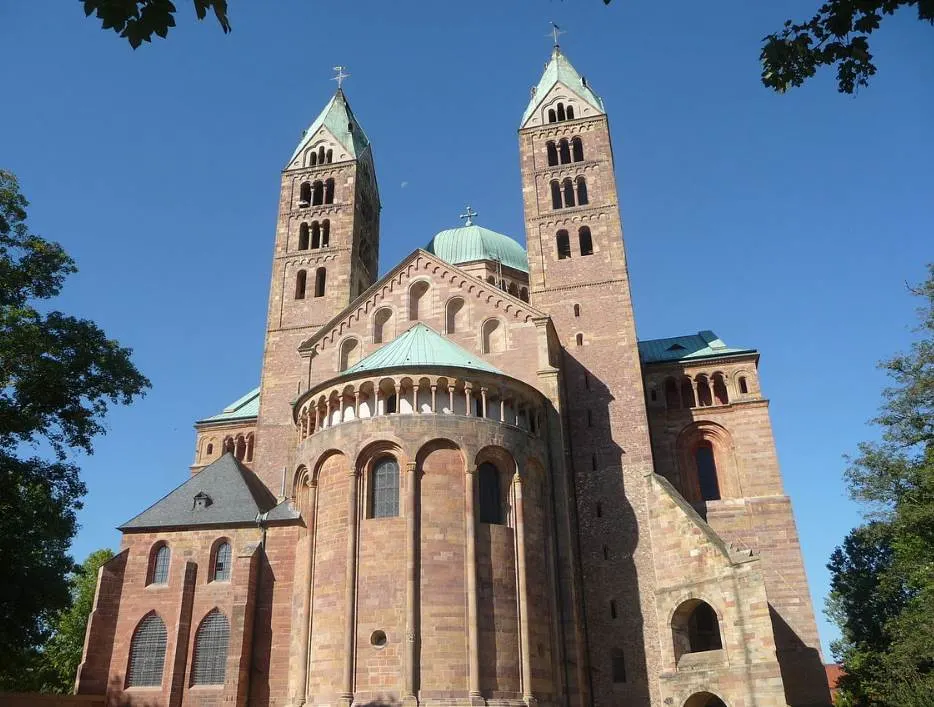The fall of the Western Roman Empire in the year 453 A.D. was one of the most important events in human history.
It plunged the western part of Europe into the Dark Ages, and this meant that the architectural landscape didn’t change much for many centuries.
The structures constructed by the Romans and the Byzantine buildings that were constructed in the Eastern Roman Empire served as the inspiration for a new era in the history of architecture.
So what is Romanesque architecture? In this article, you’ll find out!

History of Romanesque architecture
The Western Roman Empire fell in the 5th century and the Romans left behind a lot of buildings. This included Roman Temples, bathhouses, and amphitheaters.
This also included a lot of other infrastructures such as roads and bridges. Unfortunately, the people who lived in the aftermath didn’t maintain it and everything crumbled during this period of cultural stagnation.
There is no consensus as to when Romanesque architecture emerged. The suggested period encompasses about 500 years between the 6th and 11th centuries.
Some art historians classify the era before the 10th century as “Pre-Romanesque” to make a distinction. There is no clear difference, however, between the style of building constructed after it.
It was, however, the first major architectural movement since Roman times in Western Europe and lasted until the 12th century.

This was the time when the rounded and robust elements of Romanesque buildings were replaced by the pointy features of Gothic architecture.

Main characteristics of Romanesque architecture
The name Romanesque architecture was derived from the architecture during the Roman era and can be translated to “Inspired b Roman architecture.”
The main difference between this medieval type of architecture and Roman architecture was that it featured load-bearing walls and piers. This is very similar to Byzantine architecture.
The Romans mainly focused on pillars, pilasters, and arches to support buildings. This is why Romanesque buildings appear to be very robust and solid.
Below is a list of some of the most important characteristics of Romanesque architecture.
- Incredibly thick walls – Because walls and piers carried the load of the building, they were very thick, sometimes up to several meters, and only feature small openings.
- Rounded arches – The arches of Romanesque are nearly always semicircular in shape.
- Arcades in churches – Modeled on the design of Roman basilicas, most churches featured arcades that separate the nave from the aisles.
- Vaults and domes – Many types of vaults emerged during this period, including barrel vaults, ribbed vaults, and groin vaults. Domes were integrated into cross-sections of churches.
- Piers for support – The arches were supported by square piers that enhanced the structural strength of the building.
- Columns – Unlike in Roman architecture, columns weren’t the min supporting elements. They were often decorated with Romanesque artworks and featured capitals inspired by Corinthian columns.

Types of Romanesque buildings
Romanesque architecture wasn’t limited to specific types of buildings as many different types of structures were constructed in this style.
Let’s take a closer look at some of the most important types of Romanesque buildings.
- Churches – Romanesque churches were constructed all across Europe. Many, however, have undergone renovations that incorporated other styles into the initial design.
- Abbeys – Monasteries and abbeys were constructed during the Middle Ages and several have survived. These often included cloisters, chapter houses, and baptisteries.
- Castles – Fortifications in Europe played a major role in securing regions during a time when war was prevalent. Many castles in England were constructed by the Normans after their conquest in 1066.
- Palaces – The medieval rulers often constructed palaces instead of castles, although they were always fortified. Important rooms inside these palaces were the so-called “Great halls.”
- Town Halls – While there aren’t many surviving Romanesque city halls, many were constructed all across Europe and served as important secular buildings.

The Revival of Romanesque architecture
The Romantic era happened in the 19th century and this was accompanied by a sense of nostalgia for the past. Triggers for this sentiment were the industrial revolution and urbanization.
This was reflected in the construction of Romantic buildings all across Europe which were often inspired by architectural movements from the Middle Ages.
Gothic Revival architecture became very popular during this period and this encouraged some architects in Europe to look even further back.
American architect Henry Hobson Richardson (1838-1886) made the style popular in North America and these buildings are now referred to as Richardsonian Romanesque.

Most notable examples of Romanesque architecture
If you want to get a better idea of how Romanesque buildings look like, then here are some great examples of Romanesque architecture:
- Speyer Cathedral – One of the best examples of this medieval type of architecture in Germany that was constructed between 1030 and 1103.
- Basilica di Sant’Ambrogio – An ancient church in Milan that was completely rebuilt in the Romanesque style in the 12th century.
- Florence Baptistery – A famous building in Florence that is considered to be the epitome of Florentine Romanesque architecture.
- Abbey of Santo Domingo de Silos – A medieval abbey in Spain that features an amazing cloister and stunning Romanesque artworks.
Want to discover more? Here is a list of some of the most famous Romanesque buildings.

